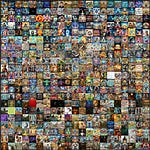The Power of Horizontal Levels in Trading
Today I want to share something simple, but incredibly effective, that can transform the way you look at markets. I’ve been trading for 20 years, and if there’s one fundamental lesson I think everyone should master, it’s this: horizontal support and resistance levels.
This isn’t complicated stuff, but it can change your trading and investment decisions dramatically.
Support Becomes Resistance — and Vice Versa
One of the most reliable principles in technical analysis is that old support, once broken, can often become resistance when retested. That’s where opportunities appear: maybe you exit positions in profit before a further drop, or maybe you take a short.
The opposite is true in an uptrend — old resistance, once broken, often acts as support when price comes back down.
It sounds basic, but the market respects these levels time and time again. And if you’re not watching them, you’re missing a big piece of the puzzle.
How to Spot Them
Here’s the key: horizontal levels need at least two touches. If the level is above the current price, it’s resistance. If it’s below, it’s support. That’s it. No need to overcomplicate things.
Take Ethereum as an example. Look at the two-day or daily chart and draw in the old highs around $4,100. See what happened last night? Classic case of resistance being retested. This happens over and over again in every market cycle.
Forget Sloping Trend Lines
Now, here’s where I know some of you will disagree with me: ditch the sloping trend lines. They’re subjective, you can move them around to fit whatever story you want, and they don’t give you precision. They’re not worth your time. Horizontal levels are objective. They’re reliable. They work.
Why This Matters
Whether you’re an investor or an active trader, horizontal levels give you clarity. They show you where to buy, where to sell, and how to anticipate what’s next in the market. If you start incorporating them into your strategy, you’ll see the difference.
Happy Hodling - Craig












